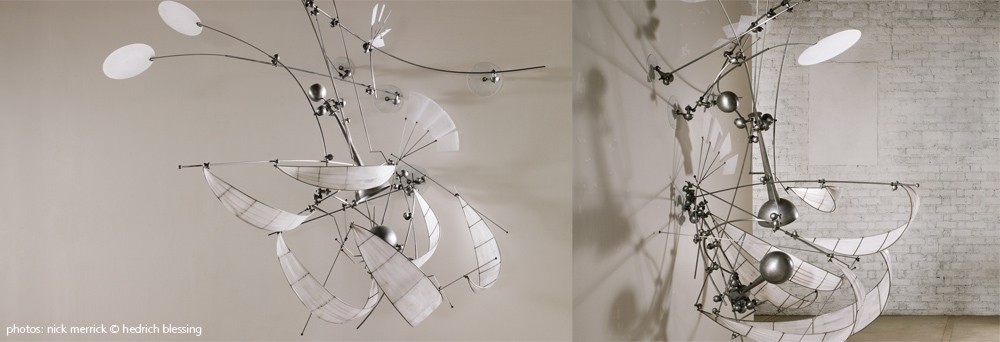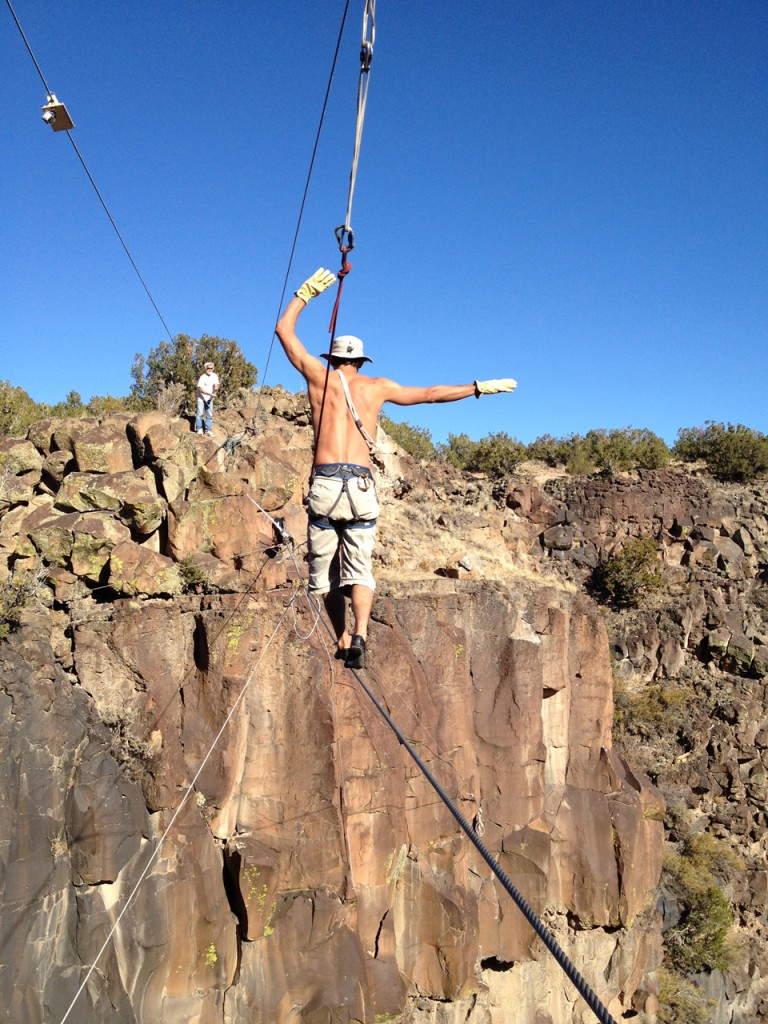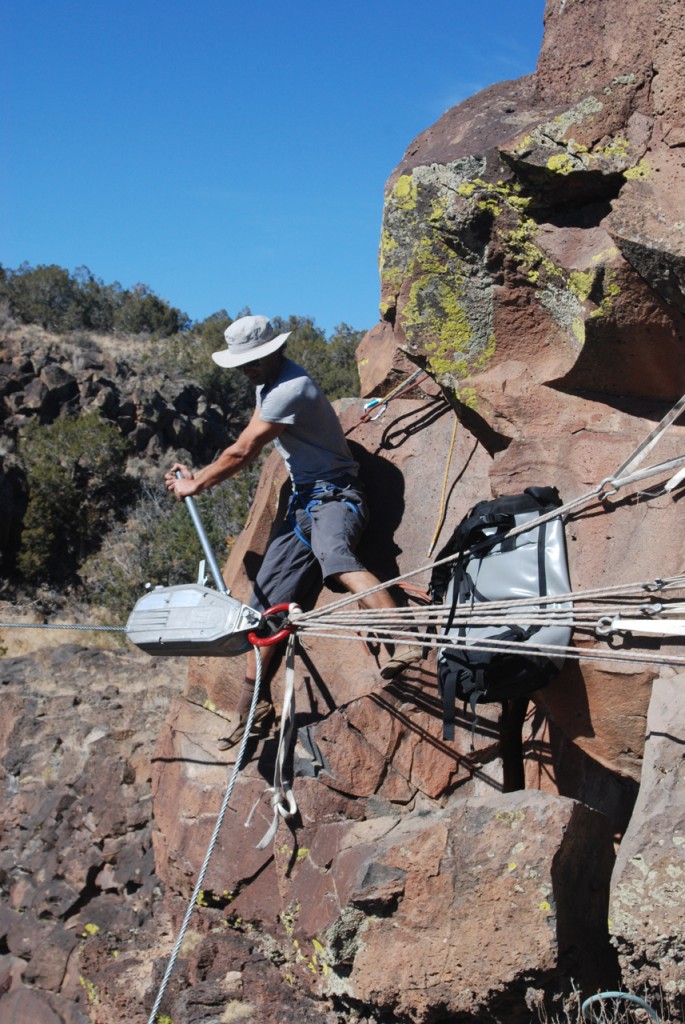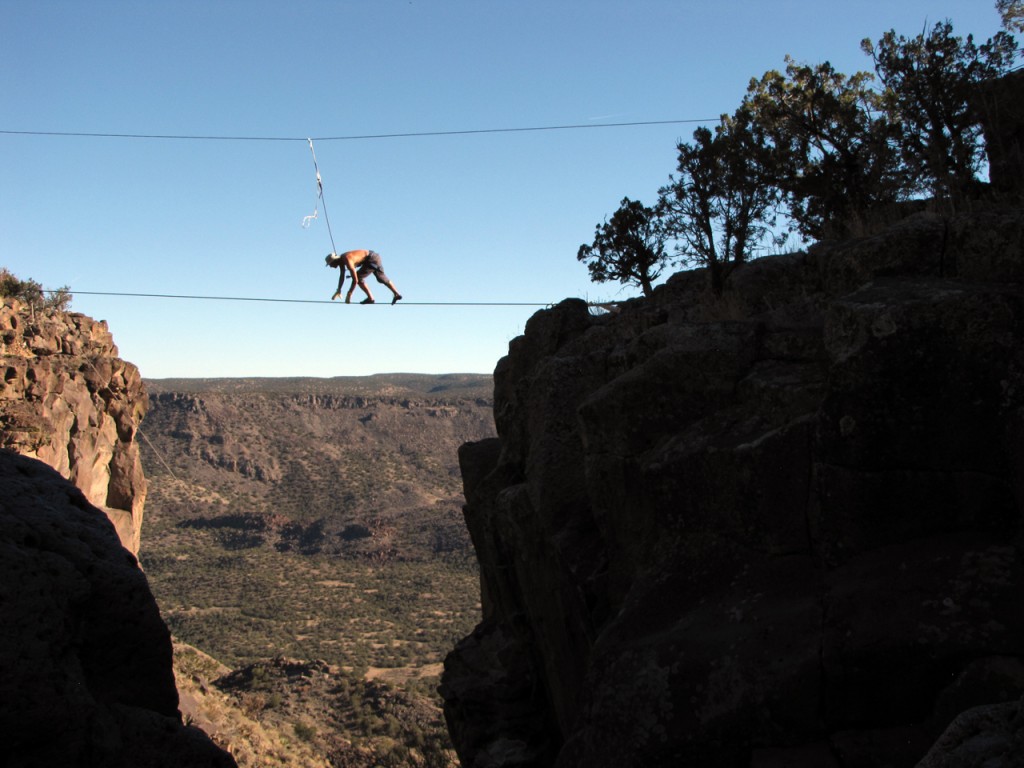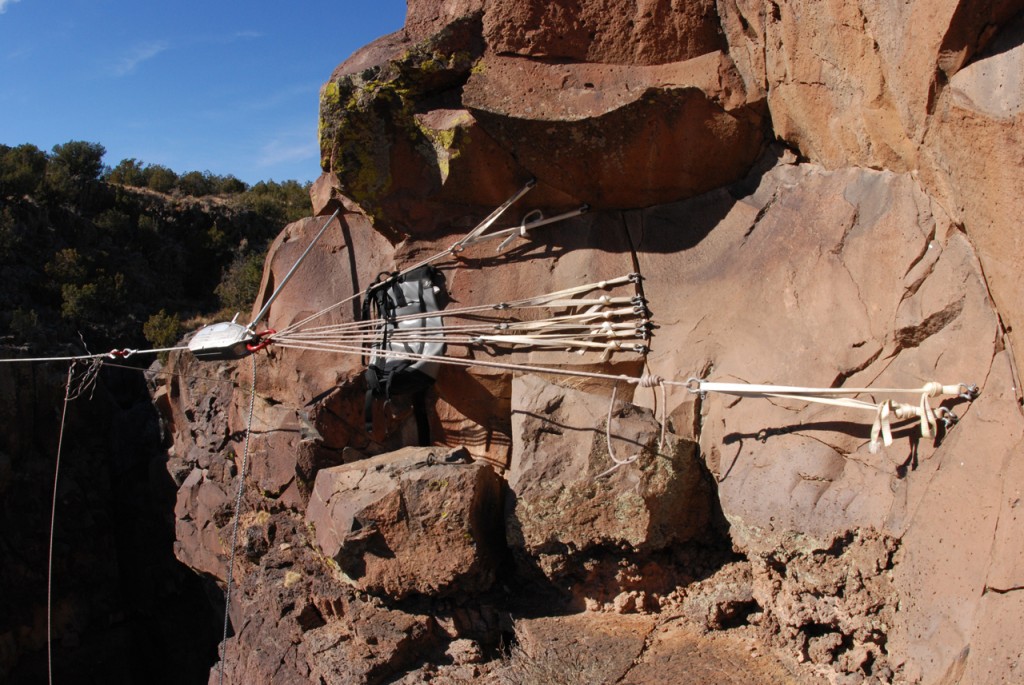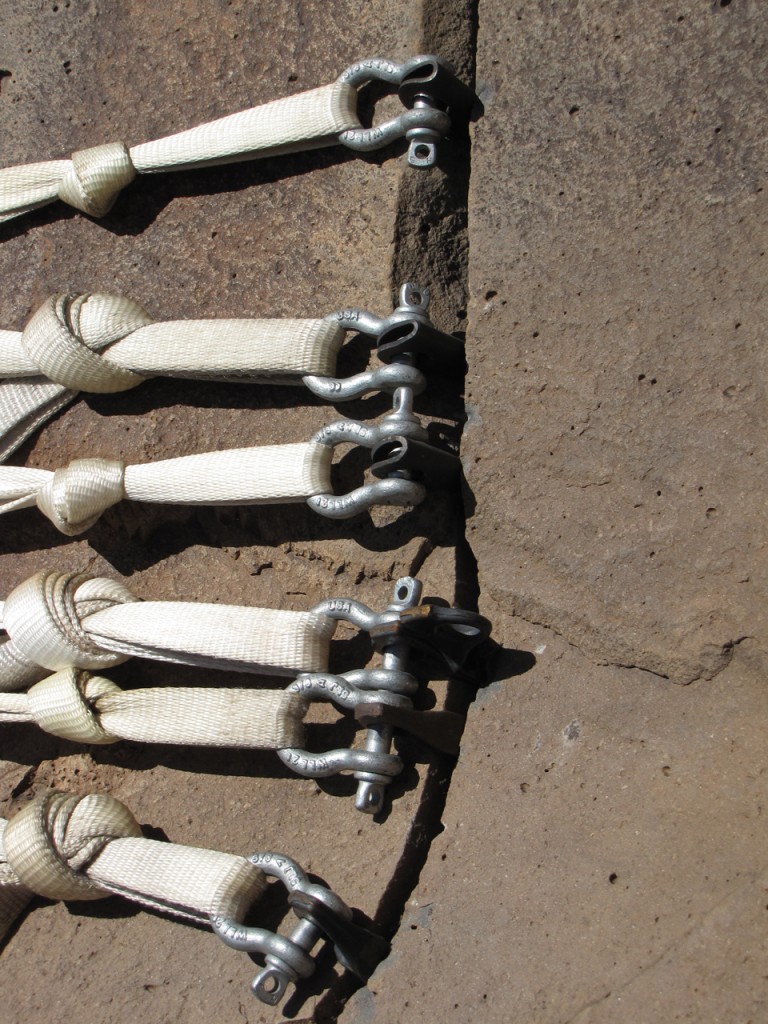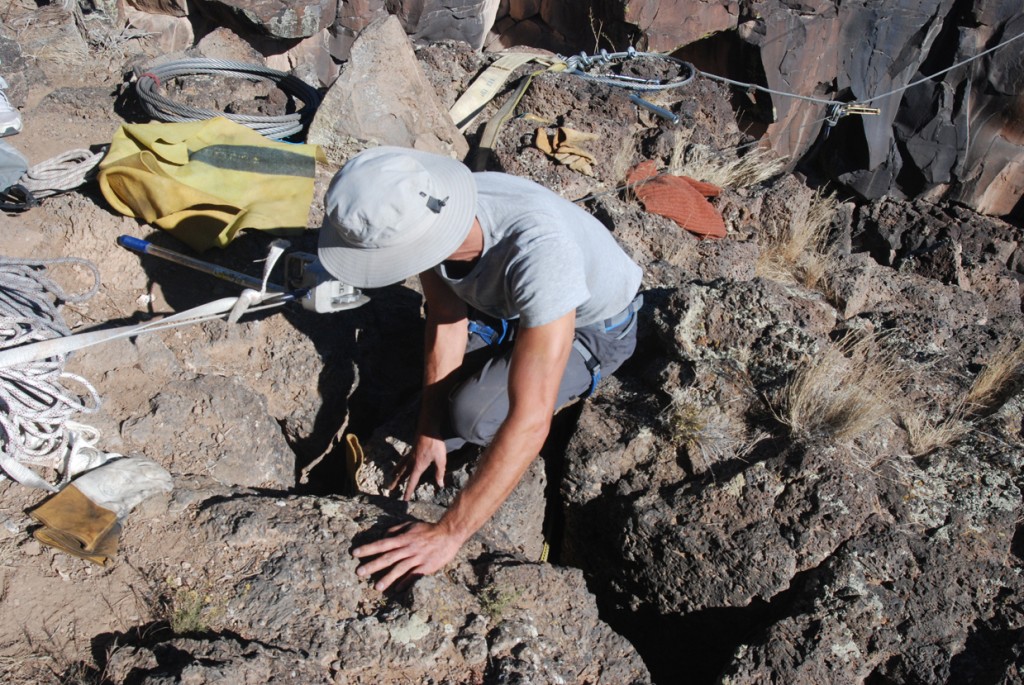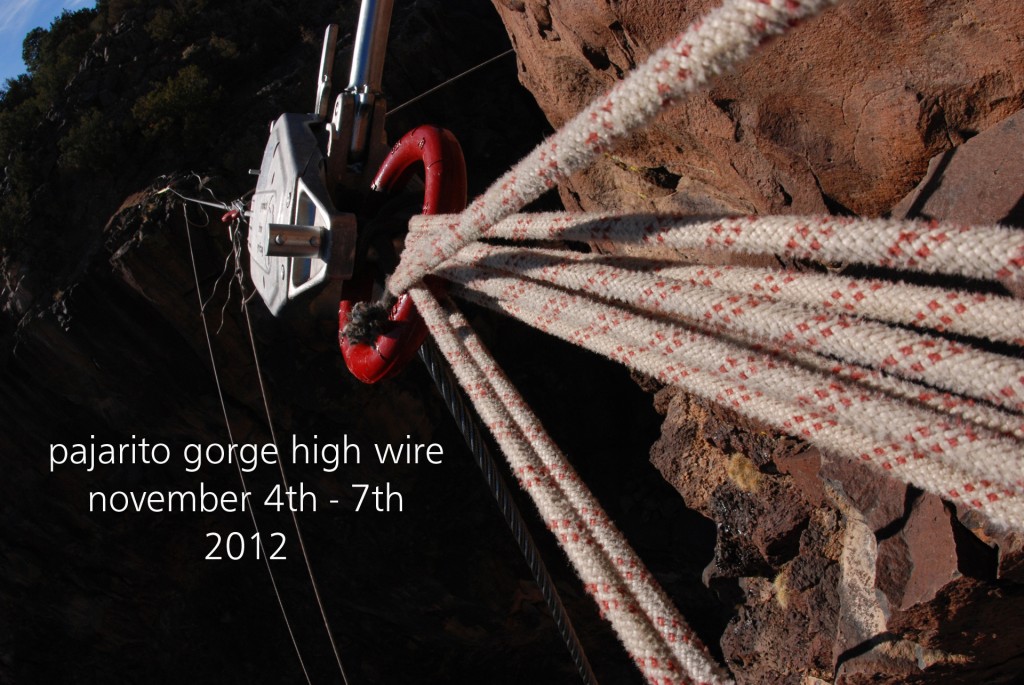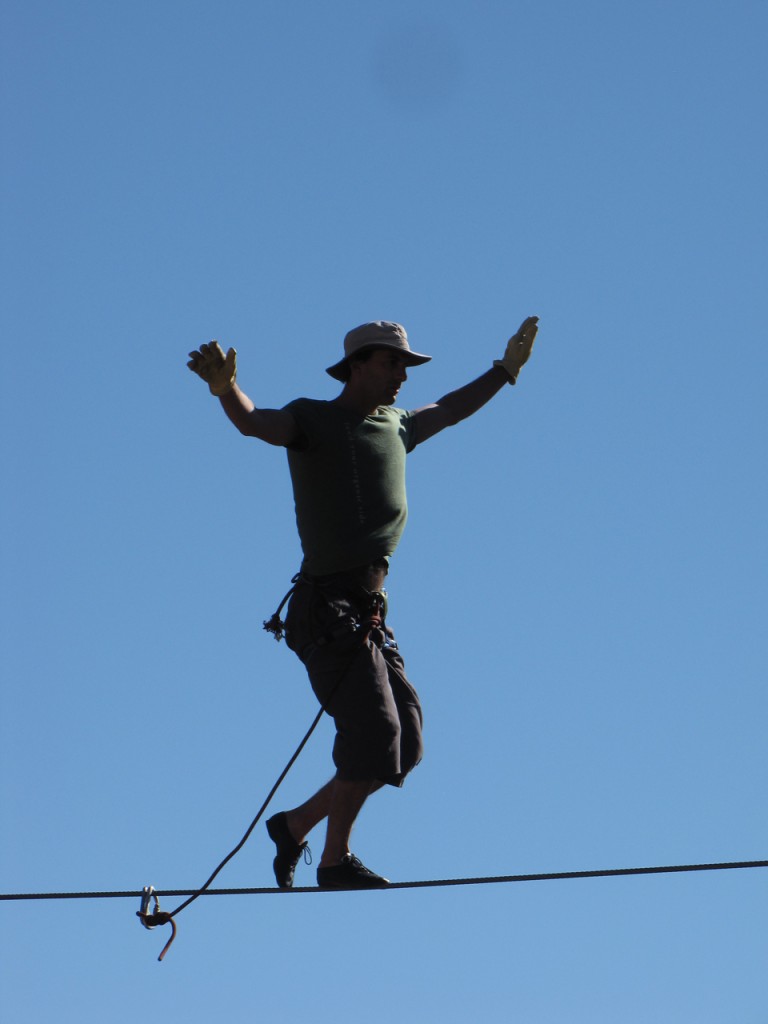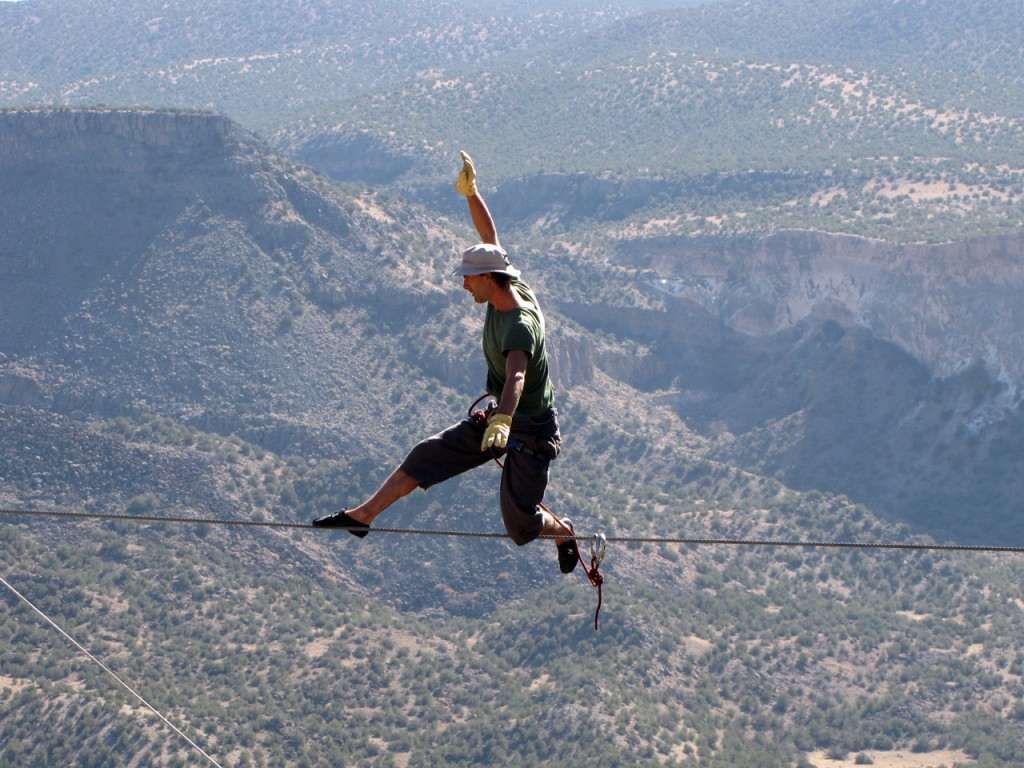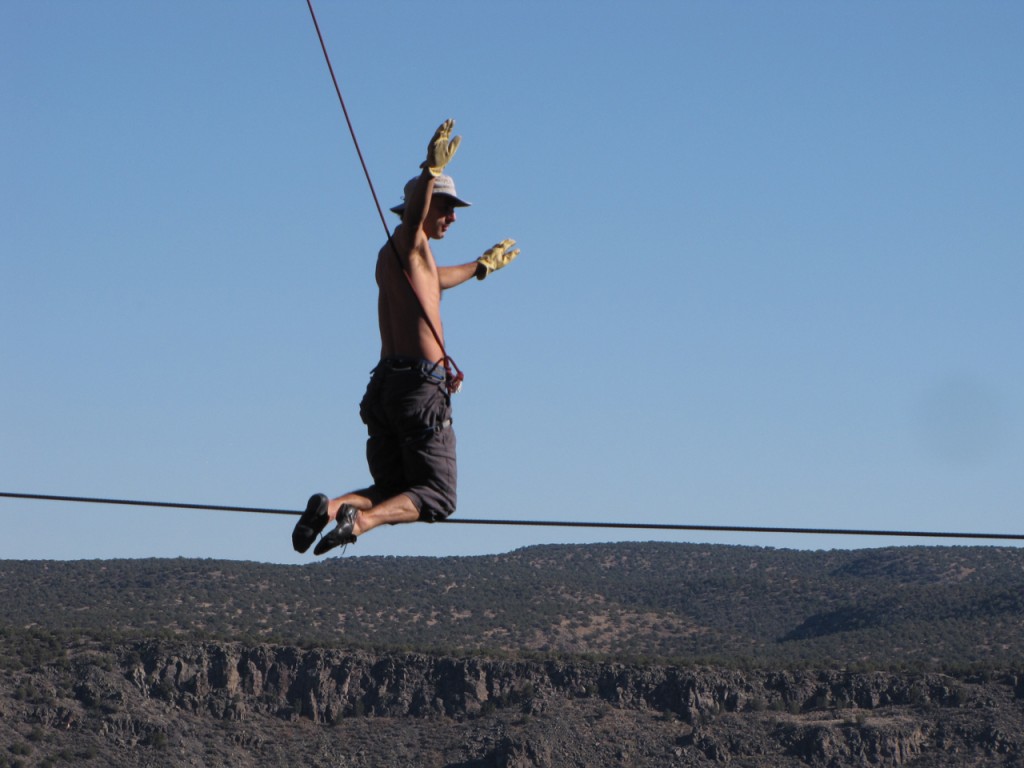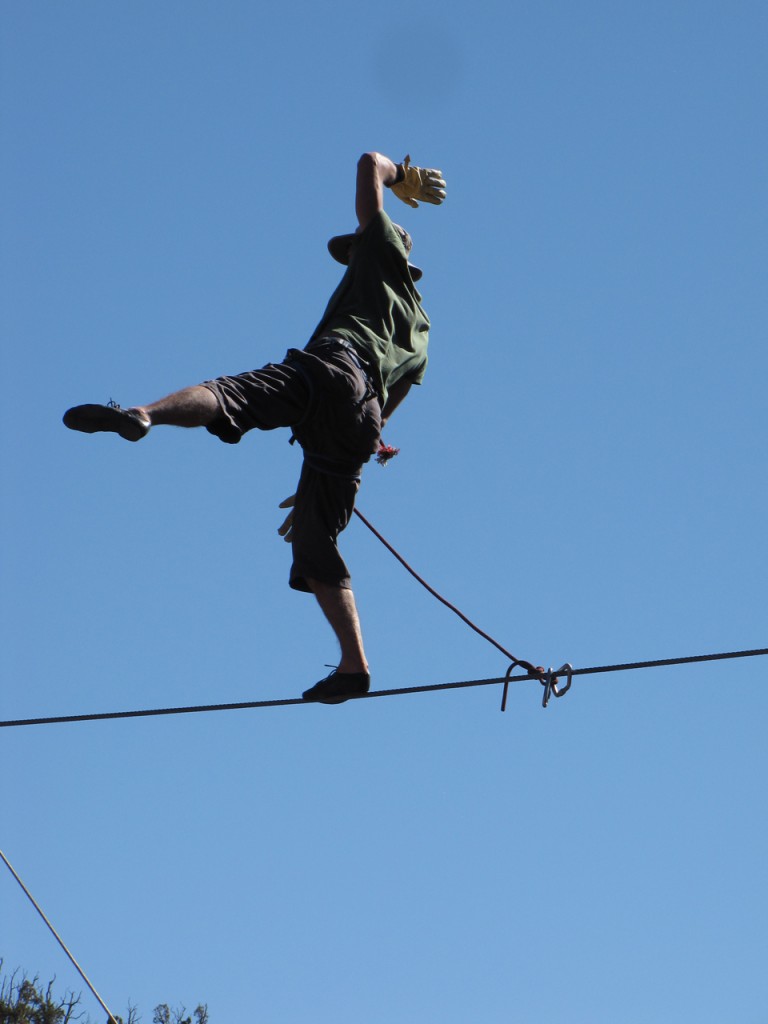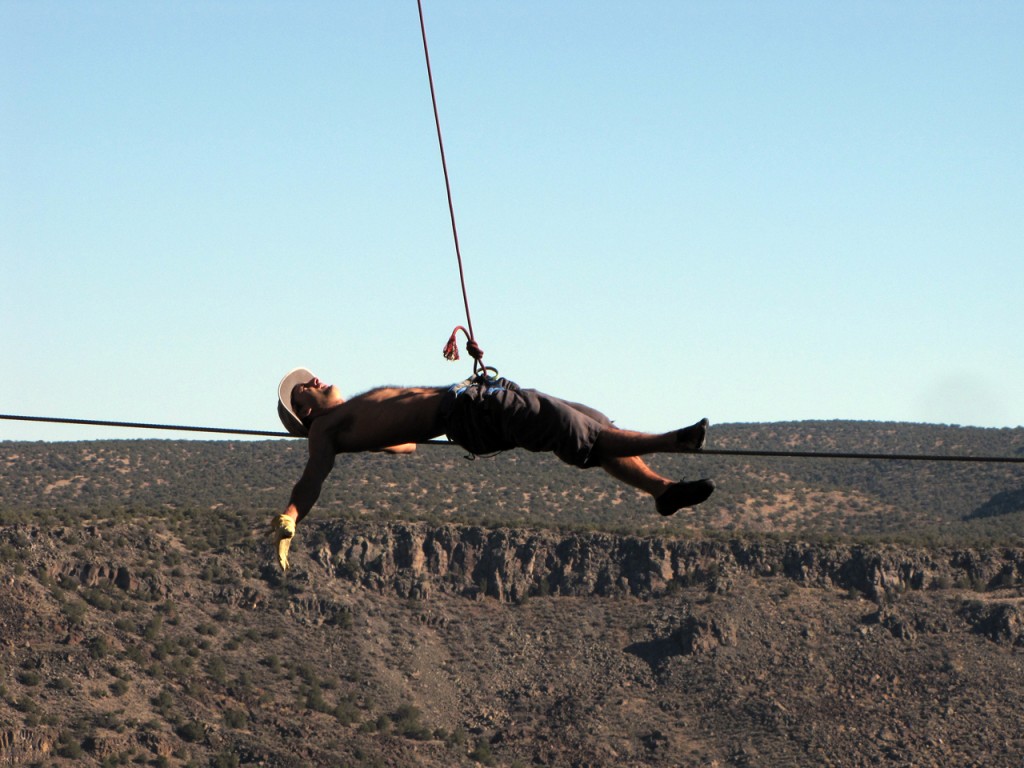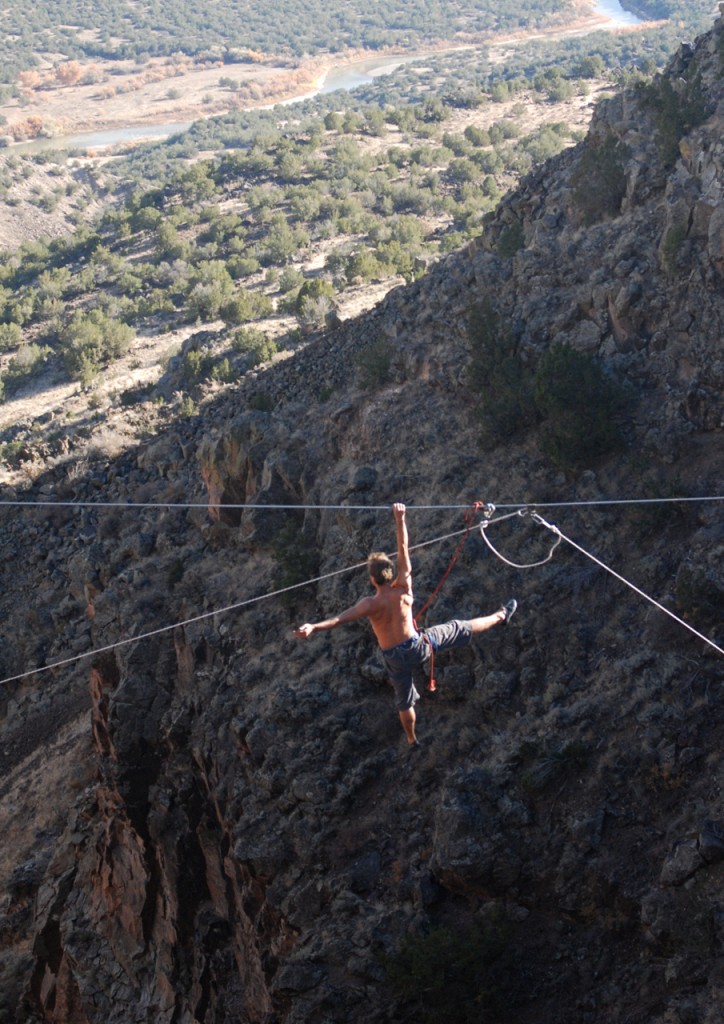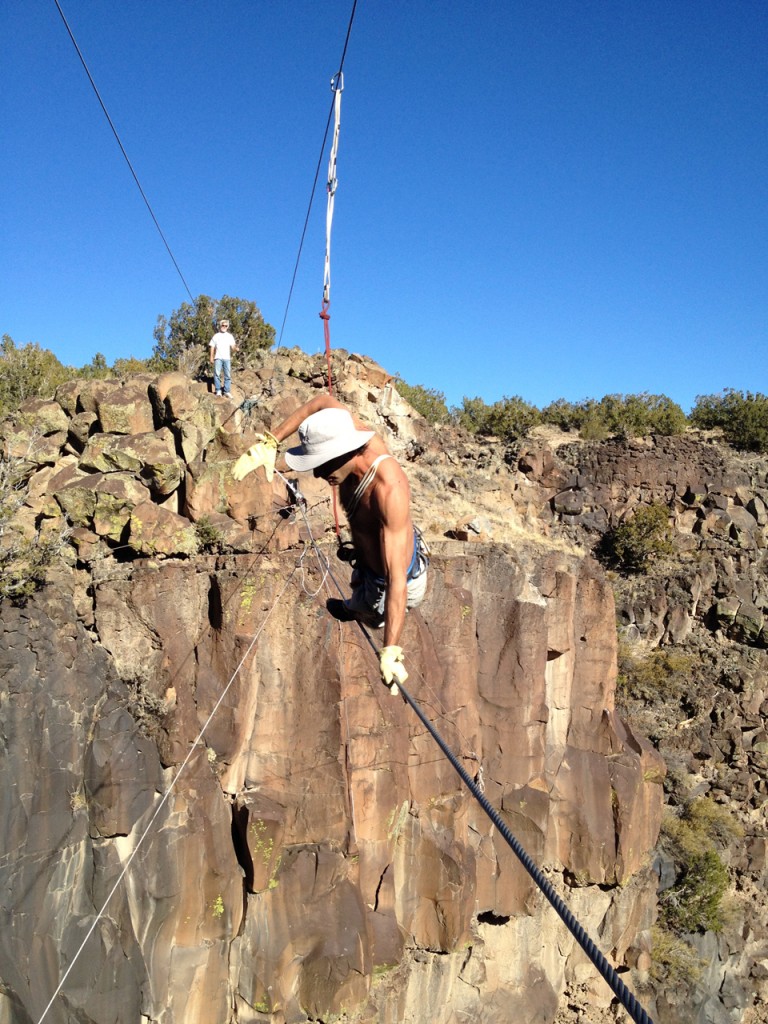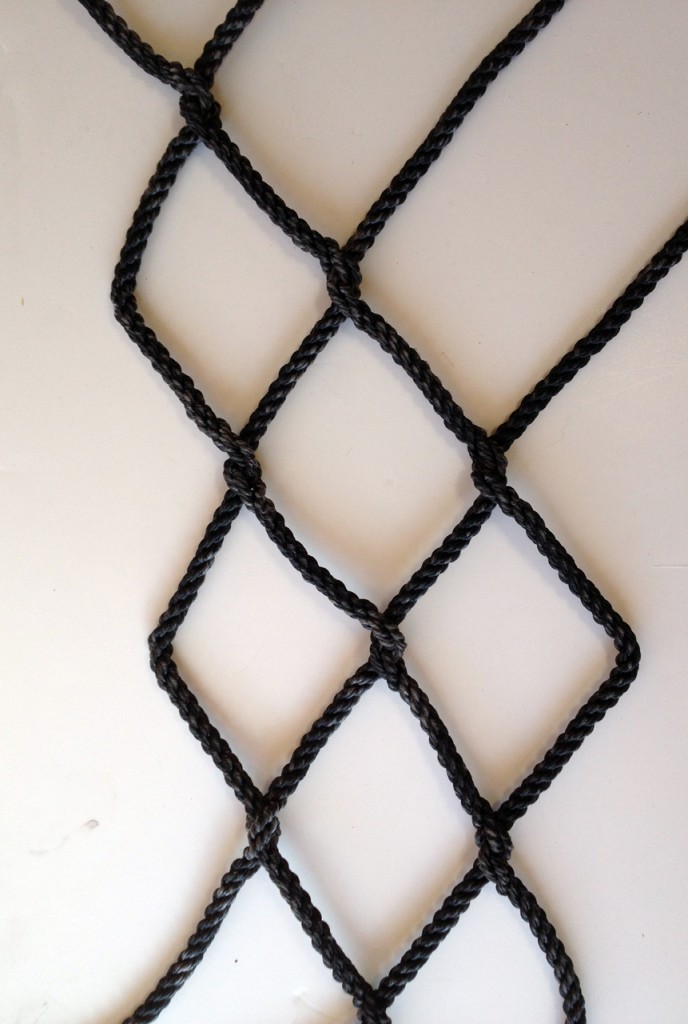Monthly Archives: November 2012
november process
In Mircea Eliade’s, The Two and The One, there is a section called Ropes and Puppets. In this section of the book Eliade examines stories and myths where ropes are links to the heavens and the realms of spirit. First he starts with describing a rope trick. It is a startling performance, a traditional Fakir trick, but this trick also exists in variations around the globe. In one variation, the performance consists of the guru taking a magic rope and tossing it into the air so that it climbs so high that it disappears from view. The rope is mysteriously anchored to the heavens and his disciple then climbs the rope until he disappears as well. The master then follows his disciple up the rope with a sword. A little while later the dismembered parts of the disciple fall to the ground. The master then returns down the rope to the ground and proceeds to puts the fallen and cut apart man back together, which to the astonishment and amazement of all causes the disciple lives again completely unharmed.
There has been some effort to explain the rope trick yet nothing is entirely satisfactory in explaining the experience. Some scholars have argued that it works on collective suggestion, others have said that it relies on an extraordinary slight of hand. What a slight of hand that must be to witness! Whatever the cause, or how it operates, it has an interesting theme which is common in many shamanic and spiritual traditions. In spirituality, evolution is often likened to a sort of death. In some shamanic traditions initiatory dreams often consist of being devoured by demons, bones picked clean. Then the demons or spirits put the bones back together and re-flesh and organ the skeleton and by breathing life back into the initiate, the individual lives again. This is considered a spiritual rebirth.
In a breath meditations (part of the Viraja Homa) which I regularly practice, one begins by cultivating a fire which then consumes the inner body, burning it to ash. From this ash a wind is born which blows a nectar back into the shell of the body giving it life again. These experiences and stories/practices all reflect a process of self destruction and creation of a new self.
In The Two and The One, there are other myths dealing with the significance of ropes and chains linking man to heaven, spirit to body, and heaven to hell, which I will not elaborate on at this time. But the point being that at this particular moment I spend much of my creative practice engaged with and on ropes and cables, connecting various pieces together to form a system/whole which carries me at times high above the ground. My intuition tells me that my current endeavors share fascinating connections to these myths and I would like to deepen my understanding of this connection.
I have begun to string lines high in the air linking hoist, slings, pitons, building anchors in rock, spanning the walls of a gorge. For the first time I have enjoyed a simple pleasure in balancing high above the ground. At last with much practice over the last year and carefully honing my rigging knowledge, I am able to enjoy the dance of the high rope without the paralyzing fear that something is perhaps about to go horribly wrong. In addition to the wire, I have rigged other lines across the gorge. On one traveled my safety tether, which I still opt to use at such height and with the strong thermals this gorge seems to create. On the other rode a camera which was crudely rigged with a pulley system using fishing line to travel back and forth. I walked and my friends Chuck and Darien traveled the camera back and forth following and passing me as I worked upon the wire. This project has been really exciting to me, it feels like a whole new world of exploration has opened up. I dream of great lines and nets strung between hills and cliffs which all but disappear at great height and tiny figures dance silhouetted against the brilliant sky. Now I know that this is possible for me, not just a dream. I now need to focus on finding and cultivating relationships with people who wish to help in the production of such ventures. As the weather gets colder and snow covers the ground, I will have more time inside which I will use to create proposals to bring to others and solicit their help. The other thing I want to look into is the building of nets. These seems like the next step away from the tether, but with still protecting one in a fall if the wire is lost. I want the freedom from the tether, but it would be foolish for a wire walker of my experience who uses no pole, working at great heights with unpredictable winds, to do away with a safety completely. Also nets are such interesting structures, not just in form but in their histories, metaphor and myth. I feel like soon I will learn to weave a strong net of nylon rope and use/rig it to protect an aerial fall. In addition I am thinking next semester’s research also will delve into myths, histories and symbolisms of ropes and webs.
But anyways, back to the current work. In this process I successfully rigged a wire across cliffs for the first time, something I have dreamed of doing for the last year since first setting my feet on a wire. Chuck, Darien, and I built two anchors which were both elegant and very strong. One consisted of a nest of 10 pitons woven together in a web which would lengthen and release stress if any one piece were to fail. It is based on a design commonly used in rock climbing and rescue anchors, but substantially stronger and therefore more intricate.
The other was created by hitching two massive basalt columns with thick nylon slings. Disturbingly, both columns initially moved as we brought the wire up to tension. They however soon settled into what thankfully was a static state.
In the process of tensioning the wire, you soon realize that you are dealing with huge forces, capable of causing great change, no longer operating in the familiar scale of the human body, but more in the realm of the elements. You try your best to be aware of your body’s placement in space and in relation to the rigging as it is tensioned. Your ears and hands are your best senses to observe as you heave on the Tirfor’s long handle bringing the wire to over three tons tight. If the air is calm you will hear and feel the pulses and beats of shifting rigging which your eyes may miss. Choose your position wisely so that you are least likely to become maimed if something fails under stress. The art of rigging lies in the absolute avoidance of any sudden or unexpected releases of energy. Yet rock is to a degree unpredictable. In rock climbing sometimes a foothold which supports one’s weight shears of the wall unexpectedly causing a sudden and startling shift in one’s balance which can cause a fall. Thousands of tons of rock fell off of Glacier Apron in Yosemite in the mid nineties. What happens in the event of a rigging failure is one discovery in all of this I hope to never make. It sounds simple enough to avoid, but many a wire walkers has been harmed or died at the hands of a failed rig. It is frightening enough when a rope which you are suspended from shifts a couple of inches, it scraps against the rock and your heart races. I can’t imagine a failed tight wire, whipping through the air with ample speed to cleve in half a man, although I have read of this happening.
In the last week I put together a short video from the footage that I gathered and some of the sounds I recorded.
Looking at it I wish I had more footage of the other participants, Chuck and Darien, helping and watching the walking and setting up the rigging, for the participation of others is so much a part of what makes this process amazing and exciting to me. But in the midst of such a complicated endeavor I decline to split my focus between rigging and filming. At this point the documentation of the process invites collaboration as well. Perhaps I can find a film student at one of the schools in Santa Fe who might be interested in creating a piece with me, but honestly where I want to carry the work forward is bringing people to witness the actual installation and act. In person you feel the wind, can walk to the gorge’s edge, and can touch the taught lines sensing their stored energy. You feel the vastness of the exposure barely tamed by the slender and elegant arcs of wire and ropes crossing from one side to the other. You sense the beauty of it all in an awesome landscape. The couple of friends who made the journey to witness my activities said they were inspired by the intensity and skill of the endeavor and encouraged me to continue my practice while seeking more public exposure. Maybe with this work a new type of interaction with the viewer has yet to be discovered, who knows, it all feels so new. For the first time in this project I have the feeling the direction I am traveling in is yielding something exciting and tangible.
Walking on a wire high above the ground is incredible. One feels as though he is a hole in the sky.
Balance comes not so much from looking but from inside, from the spine, the soles of the feet and the fingers painting the air like strokes of a brush. The cable seats deeply between the ball mounds of the big and second toe. Gripping like a bird clings to a wire, gives the feet confidence, stilling the twists and shakes.
The walk is lead by the toes which first find the wire and guide the foot forward as it glides to a rest on the cable. Shifting the weight straight forward places the center directly over this foot. The next step comes not as an order but as an offering, it cannot be rushed. It will occur in its own rhythm. Bending the legs deeply and lowering down to the wire, the sit bone latches to the wire like a hook.
The spine straightens and the trembles of the wire ebb. One leg hangs like a keel, the other extends out forward until the length of it rest on the wire. In a careful arc it moves under the wire so the toes hook the wire and the back begins to un-role onto the wire. The arms spread and drape, then finally the head comes to rest on the wire as if it were a pillow. The body lays as if it were a skeleton balanced upon a line. The sun blinds the eyes causing them to shut. Now without sight, the wire finds a seat along the spine, and the other leg can rise to stack upon the first so now both legs rest upon the wire the body in Shavasana. Now the boat has raised her keel and the muscles of the arms and torso become active steadying the body from rolling on its narrow perch. Without a pole, the hands can grasp the wire and lower the body to hang from one arm, pinned to the wire like a piece of laundry. The eyes wander, no longer occupied with balance or hiding from the suns rays.
They look to the ground, to the feet, allowing the first understanding of the true environment. It is huge, the ground is farther away than the walls of the gorge which farther down stream joins the Rio Grande. The river looks so small, how does it quench the thirst of some many? Does it even survive to join the sea during the spring snow melts? No, I think it dies somewhere in Texas, drunk to the point it becomes cracked earth. Both hands latch onto the wire and the body curls up over the wire to become seated again. Now to press up to standing in a moment of faith. Now the dance of balance begins again. The end of the wire is approaching, now it is time to turn. The balls of the feet lift and the body spins 180 degrees. The eyes reach out hard to grasp the cable, but the body is no longer over the wire. A legs swings up to catch the balance, but it is not right either, and faster than the mind can command, the body draws itself toward the wire to embrace it. The hands have reached out and grabbed the wire tightly. A leg hooks and curls around the hard steel rope. The fall creates a momentum which will be used in the next instant to regain the perch atop the wire. Back above the wire it is best to be not haunted by the fall. Its only use now is a release, a shedding of tension towards creating a more fluid dance of uncertainty. The fall waits, to deny it is impossible. It is this uncertainty that makes the dance of the rope extraordinary. If the fall absolutely could be avoided, the beauty of the act would be diminished. But to miss the wire in a fall, to not embrace it with intense power, but to let it slip from the grasp is terrifying. It should never happen.
On to net making, I am starting by trying to find information on how it is done. Ironically my research project deals a great deal with tensile structures, which of course nets are. However most of the research of have done deals with steel cable nets and not rope nets. I have to perhaps consult fishing references? Here is my beginning exploration into the net, working from a splice I noticed in one of Frei Otto’s book on nets. I have order some nylon rope and must wait for its arrival to begin the weaving.
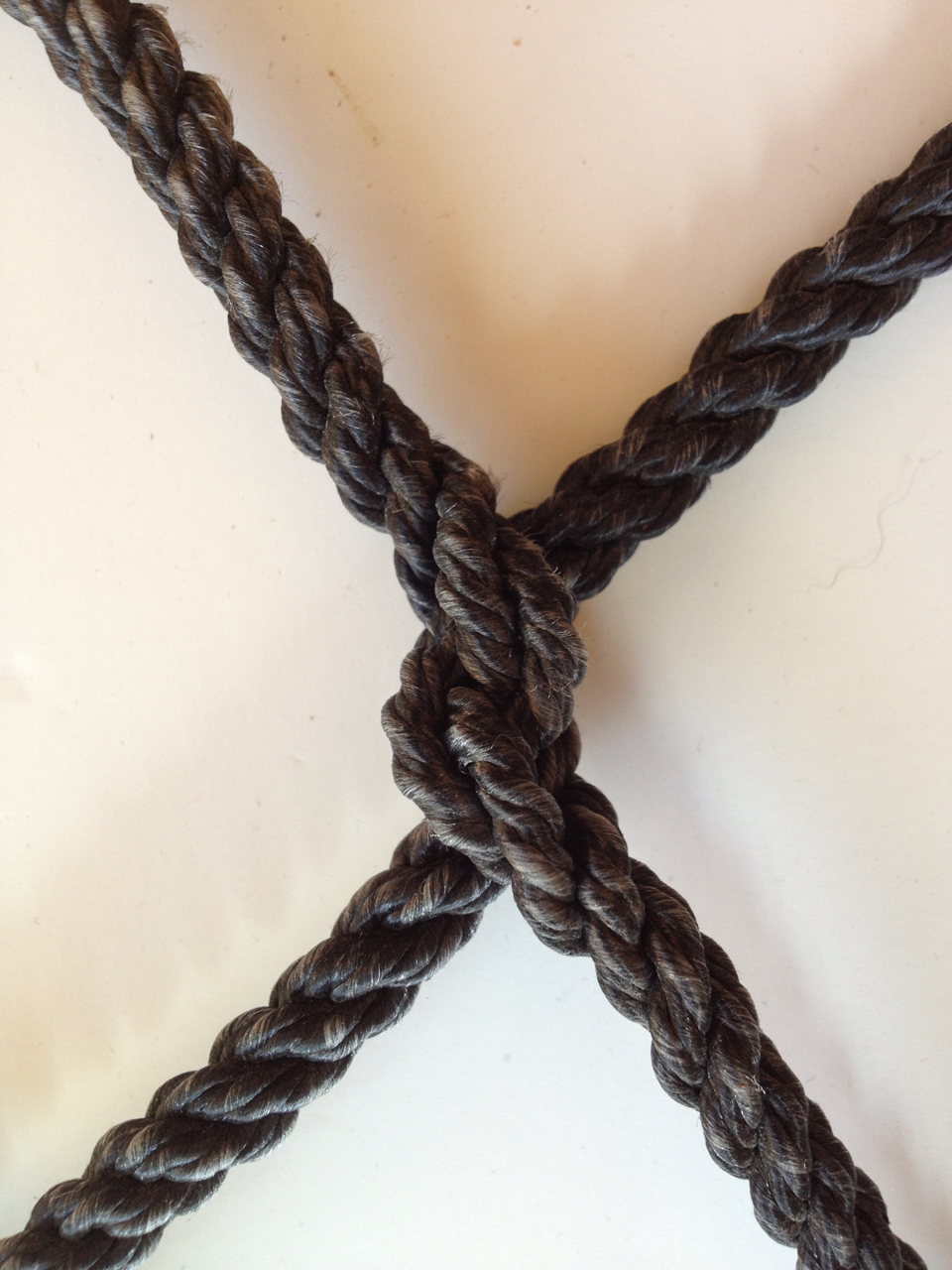
I really look forward to seeing everyone in NYC in a couple of weeks and seeing what you have been up to.
best jamie
